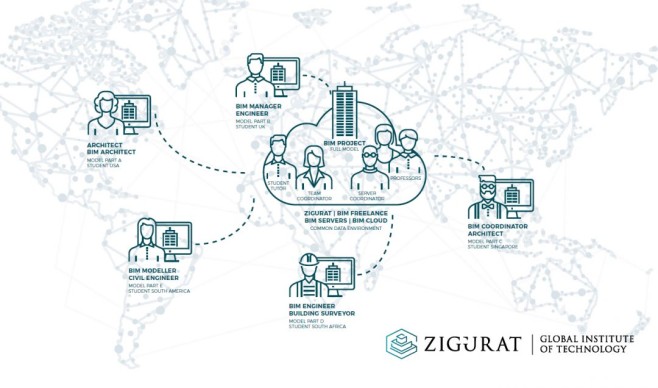Zigurat Global Institute of Technology
Blog / BIM & Construction Management
Working collaboratively with BIM
Categories

When implementing BIM, we have the opportunity to work collaboratively with the different participants involved in the entire life cycle of a project using the same (digital) language.
One of the main foundations and reasons for the emergence of BIM methodology is the ability to work on a single shared model that is updated in real time. With players from many different disciplines all contributing information to the same model, the end result is a data-rich model that grants us valuable information at every stage of the project.
This is also where we run into the primary roadblock when implementing BIM; all participants involved in the project need to have complete buy-in and be prepared to match their workflows to this updated process. This requires a much higher level of coordination from all parties.
With BIM, we change from a linear flow to a circular flow.
Within a multidisciplinary team, everyone has the possibility to work on the part that corresponds to the skills of the individual professional or the organization involved in the project. It is here that profiles or BIM roles begin to emerge, which need to be previously defined by the BIM Manager, who must take charge of controlling the processes and workflows of a business in each and every project.
That is why it is recommended to work through a management platform which allows us to organize work teams in which we: define the members involved in the project, assign tasks and deadlines, manage workflows, keep track of documentation, create work orders, etc.
According to the Royal Institute of British Architects (RIBA), collaborative work between companies in the UK increased from 20% in 2013 to 56% in 2014. It's also important to note that:
"Most BIM users prefer to collaborate with foreign specialists in BIM rather than with their own friends."
-McGraw-Hill. Statistics from "The Business Value of BIM"
With the understanding that today more than 56% of UK companies currently work collaboratively, and increasingly more companies do not want to work with others that may not offer their services in BIM, it is evident that in both national and international projects it is really a danger to continue working with conventional systems.




